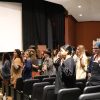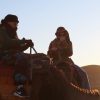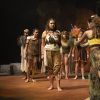Fifteen years ago, in the wake of the Columbine shootings and six other similar school tragedies, Marjorie Sanfilippo, Ph.D., a child psychologist, was asked by ABC 20/20 with Diane Sawyer to recreate her research about children’s behaviors around firearms for a show on the topic.
Fast-forward 15 years—and 61 more school shootings—to just months ago, when 20/20 producers asked Sanfilippo, now Associate Dean of Faculty and Professor of Psychology at Eckerd College, to show a new generation of adult viewers what happens when children have access to firearms. Hidden-camera footage is used extensively to capture children’s behaviors when they discover firearms in backpacks at school and in their homes.
“Young Guns: A Diane Sawyer Special” will air at 10 p.m., Friday, January 31, on ABC. See a promo of the episode and a related story by ABC News featuring Sanfilippo entitled, “How to Ask Other Parents If They Keep Guns in the House.”
“Guns present a unique allure for children, especially boys,” Sanfilippo said. “Children are naturally curious and impulsive, and evidence has shown that we cannot keep them safe through gun safety programs alone. My research, presented by ABC 20/20 in this upcoming episode, shows that the only way to keep children safe is to keep guns locked, unloaded and well-hidden.”
Professor Sanfilippo’s research on the topic investigates children’s behavior with firearms following education through a gun safety program. In the original 20/20 episode on the topic in 1999, Sanfilippo’s own son Matthew (now age 19 and an Eckerd College sophomore) was among the children who took part in the experiment. At the time, she was surprised by her son’s behavior with the gun and his subsequent lies—also a common response of children in such situations—about having handled it.
Sanfilippo published the results of three studies in the Journal of Developmental and Behavioral Pediatrics between 1996 and 2003. Her first study showed there was no difference in gun play after children ages 4-6 were exposed to a gun safety education program. In that group of children, those who had access to parents’ firearms were more likely to play with the guns, and 8 percent admitted to having played or touched their parents’ guns without permission. In the second study of children ages 4-7, 72 percent of those who were exposed to a week-long gun safety education program played with guns, versus 45 of children who were not in the gun safety education program. And in the third study, when told not to play with a gun but then given access to it, 23 percent of children ages 9-15 in the study group played with the gun, and most of them lied about it when asked.
“Put simply, don’t count on children to resist the allure of a gun,” she said.
Sanfilippo has worked with the National Academy of Sciences to research educational approaches to reducing firearm injuries and death and has received funding from the Packard Foundation.
——–
For more information or to talk with Marjorie Sanfilippo, contact Valerie Gliem in the Eckerd College Office of Marketing and Communications at 727.864.8408, or 727.641.8281.












